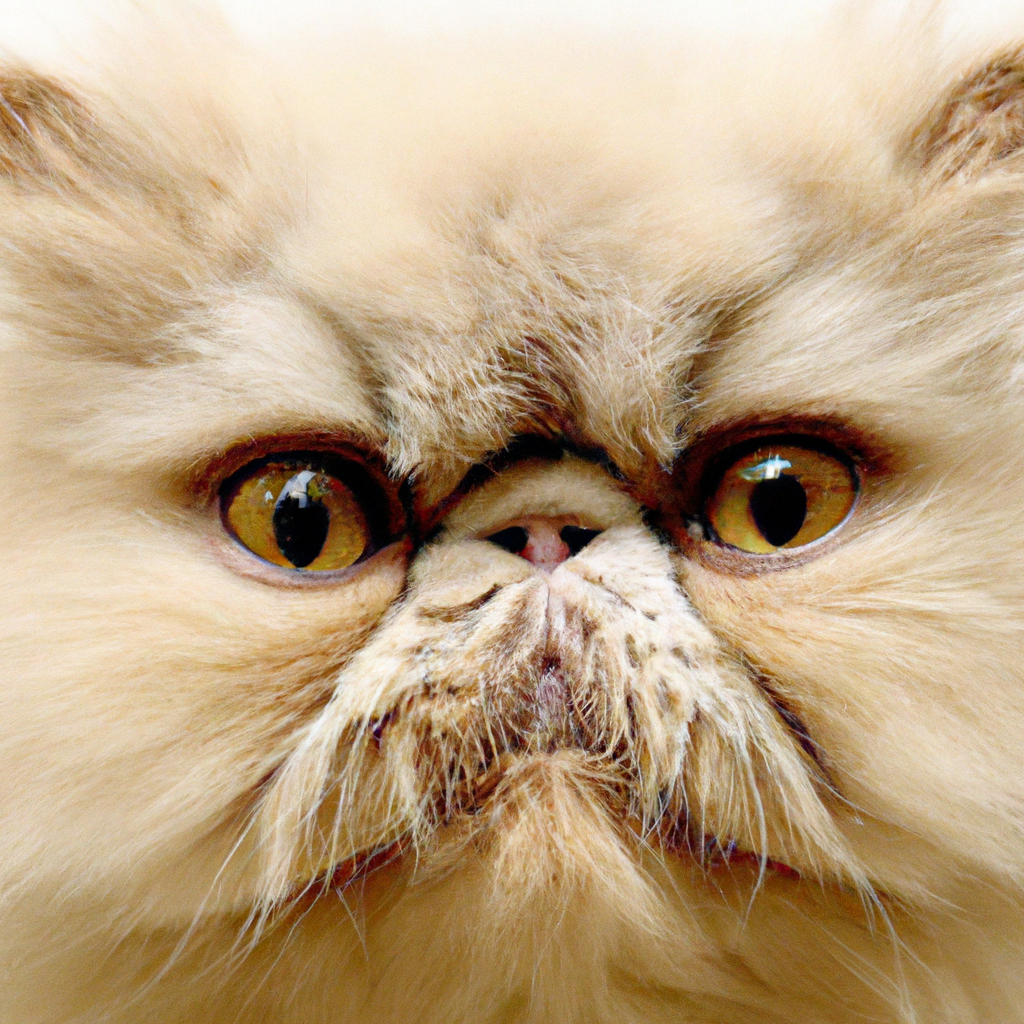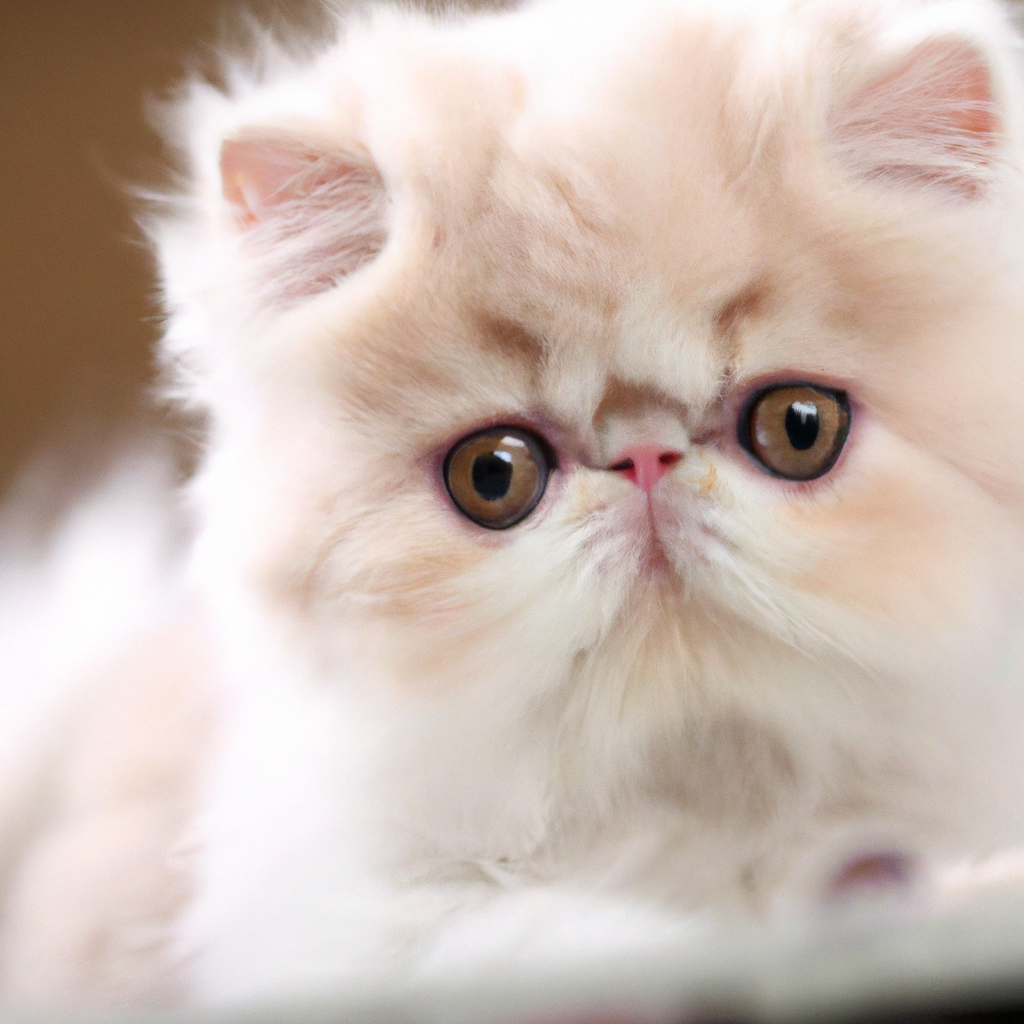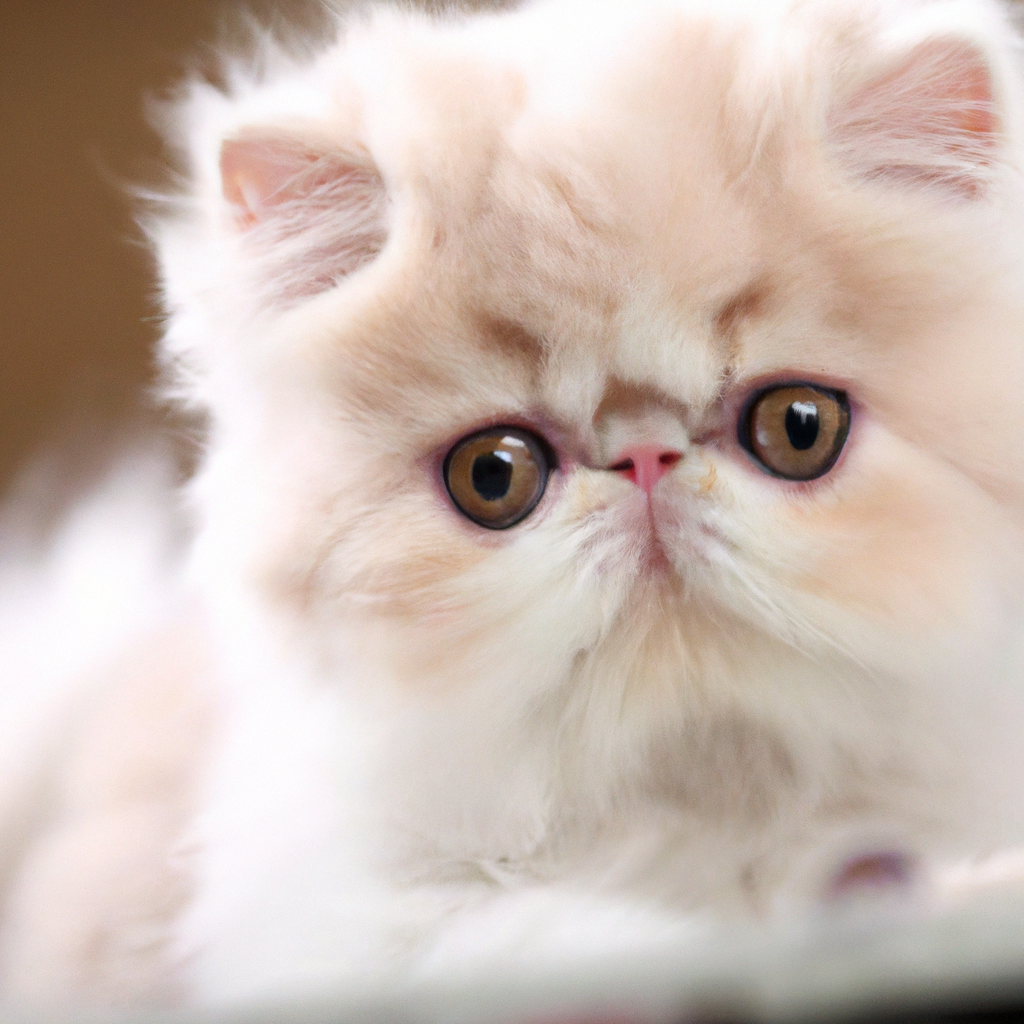If you’re a proud owner of a Persian cat, you know just how adorable and affectionate these furry creatures can be. But have you ever encountered moments of aggression or unusual behavior that left you puzzled? Fear not, for this article aims to shed light on the topic of Persian cats and aggression. Understanding and managing their behaviors can help create a harmonious and peaceful environment for both you and your feline companion. So, let’s dive into the fascinating world of Persian cats and explore the reasons behind their occasional aggressive tendencies.
Understanding Persian Cats
Persian cats are known for their beautiful, long flowing coats and distinctive facial features. They are a popular breed worldwide and are loved for their calm and gentle nature. In this article, we will explore the physical characteristics, temperament, and socialization needs of Persian cats to better understand their behavior.
Physical characteristics
The first thing that comes to mind when thinking about Persian cats is their luxurious coat. These cats have long, thick fur that requires regular grooming to prevent matting and keep it looking its best. Persian cats come in a variety of colors and patterns, including solid, bicolor, tabby, and colorpoint.
In addition to their coat, Persian cats have a unique set of facial features. They have a round head with a flat face and a short, wide nose. Their eyes are large and expressive, often in shades of blue or copper. The ears are small and set far apart. All these features contribute to the distinctive look of Persian cats.
Temperament
Persian cats have a reputation for being laid-back and affectionate. They tend to be quiet and enjoy spending their time relaxing and cuddling with their human companions. These cats are not typically as active or playful as some other breeds, but they still enjoy interactive toys and gentle playtime.
Persian cats are known for their gentle and easygoing nature, making them great companions for individuals or families. They are generally good with children and other pets, although proper introductions and socialization are key to ensuring positive interactions.
Socialization
Socialization is crucial for Persian cats to develop into well-adjusted and confident adults. Starting socialization early in a kitten’s life is important to ensure they grow up to be comfortable and friendly around different people, animals, and environments.
Expose your Persian kitten to various stimuli, such as different sounds, surfaces, objects, and experiences. This can include introducing them to new people, taking them for car rides, or exposing them to different environments. Positive reinforcement, like treats and praise, should be used to reward desired behaviors during socialization.
Common Aggressive Behaviors in Persian Cats
While Persian cats are generally known for their gentle nature, they can display aggressive behaviors under certain circumstances. It’s important for cat owners to be aware of these behaviors and understand their underlying causes.
Territorial aggression
Territorial aggression is a common aggressive behavior observed in Persian cats. They may become possessive of their living space and react aggressively when they feel their territory is being invaded. Signs of territorial aggression can include hissing, growling, swatting, and even biting.
Fear aggression
Like many animals, Persian cats may display aggression when they feel afraid or threatened. Fear aggression can be triggered by loud noises, sudden movements, or unfamiliar situations. Cats may hiss, spit, or try to escape when they are experiencing fear aggression.
Redirected aggression
Redirected aggression occurs when a Persian cat becomes agitated by one stimulus, such as another cat outside the window, and redirects their aggression toward another target, such as a human or another pet in the household. This can be a challenging behavior to manage and requires careful observation and intervention.

Causes of Aggression in Persian Cats
Understanding the causes of aggression in Persian cats is important in order to effectively manage and address these behaviors. Aggression can be influenced by various factors, including hormonal imbalances, lack of socialization, and underlying pain or illness.
Hormonal factors
Unneutered Persian cats, especially males, may exhibit aggressive behaviors due to hormonal influences. Testosterone can contribute to territorial aggression and increased dominance. Spaying or neutering your Persian cat can help reduce these aggressive tendencies.
Lack of socialization
Persian cats that have not been properly socialized may display aggression due to fear or insecurity. If a kitten is not exposed to different people, animals, and experiences early on, they may become anxious and reactive in unfamiliar situations. Socialization efforts should start at a young age and continue throughout the cat’s life.
Pain or illness
Aggressive behaviors can also be caused by underlying pain or illness. When a cat is in pain or discomfort, they may lash out defensively. It is important to rule out any medical issues by consulting with a veterinarian if you notice sudden or unexplained aggression in your Persian cat.
Recognizing and Managing Aggressive Behaviors
Recognizing the signs of aggression in Persian cats is essential for effective management and intervention. By understanding the body language and behaviors associated with aggression, you can take steps to prevent escalation and keep everyone safe.
Signs of aggression
Signs of aggression in Persian cats can include hissing, growling, yowling, swatting, scratching, biting, and puffing up their fur to appear larger. Dilated pupils, flattened ears, and an arched back are other indicators of aggression. Pay attention to these signs and intervene before the situation escalates.
Creating a safe environment
Creating a safe and stress-free environment is key to managing aggression in Persian cats. Provide hiding spaces and vertical climbing areas for your cat to retreat to when they feel overwhelmed or threatened. Additionally, ensure that there are separate resources available so that cats don’t have to compete for food, water, litter boxes, or resting spots.
Positive reinforcement training
Positive reinforcement training can be an effective approach to managing aggressive behaviors. Reward good behavior with treats and praise, and redirect or ignore unwanted behaviors. Consistency and patience are key when using positive reinforcement. Consulting with a professional animal behaviorist can provide additional guidance and support.

Preventing Aggression in Persian Cats
Taking proactive steps to prevent aggression in Persian cats is crucial for their overall wellbeing and the harmony of the household. By addressing their social, physical, and healthcare needs, you can create a foundation for a happy and well-adjusted cat.
Early socialization and handling
Start socializing your Persian kitten as early as possible. Gentle handling, exposure to different people, animals, and environments, and positive experiences will help them become more confident and less prone to aggression. Gradually introduce your kitten to new stimuli to minimize fear or anxiety.
Regular play and exercise
Regular play and exercise are important for mental and physical stimulation in Persian cats. Engage your cat in interactive play sessions and provide toys and scratching posts to prevent boredom and frustration. A tired cat is often a calm and content one.
Proper veterinary care
Regular veterinary care is essential for maintaining a healthy and balanced Persian cat. Schedule annual check-ups to monitor your cat’s overall health and address any potential pain or illness that may contribute to aggressive behaviors. Speak to your veterinarian about the possibility of hormone imbalance and the benefits of spaying or neutering your cat.
Addressing Specific Aggression Issues
Specific aggression issues may require additional attention and management strategies. Whether your Persian cat exhibits aggression towards other pets, humans, or during grooming sessions, it’s important to address these behaviors promptly and appropriately.
Aggression towards other pets
Introducing new pets to your Persian cat’s territory can trigger aggression. Proper introductions, gradual acclimation, and supervised interactions can help minimize aggressive behaviors. Allow your Persian cat to adjust at their own pace and provide positive reinforcement for calm and friendly behaviors.
Aggression towards humans
Aggression towards humans can be challenging to manage. It’s important to identify the triggers for the aggression and address any underlying fear or anxiety. Avoid punishing or yelling at your cat, as this can escalate the aggression. Consult with an animal behaviorist to develop an appropriate behavior modification plan.
Aggression during grooming
Persian cats require regular grooming to maintain their beautiful coat. However, some cats may become aggressive during grooming sessions. Start grooming your Persian cat from a young age and make it a positive experience by using treats and praise. Gradually introduce different grooming tools and techniques to prevent discomfort or fear.
Seeking Professional Help
While many instances of aggression in Persian cats can be managed with proper understanding and training, there may be cases where professional help is needed. If aggression issues persist or escalate despite your best efforts, it’s important to consult a veterinarian or an animal behaviorist.
When to consult a veterinarian or animal behaviorist
Consult a veterinarian if you suspect that medical issues might be causing or contributing to your Persian cat’s aggression. They can perform a thorough examination and recommend appropriate treatment or medication if necessary. An animal behaviorist can help identify the underlying causes of aggression and develop a tailored behavior modification plan.
Behavior modification techniques
Professional behavior modification techniques can help address and manage aggression in Persian cats. These techniques usually involve positive reinforcement training, desensitization, and counter-conditioning to address the root causes of the aggression. A behaviorist will guide you through each step of the process.
Medication for aggression
In some cases, medication may be prescribed to manage aggression in Persian cats. Medication should always be used under the guidance of a veterinarian or a veterinary behaviorist, as they can determine the appropriate dosage and monitor the cat’s response to the medication. Medication is typically used in conjunction with behavior modification techniques.
Introducing a New Cat to a Persian Cat
Introducing a new cat to your home can be a delicate process, especially when you already have a resident Persian cat. Taking the time to properly introduce the cats and manage their interactions is crucial to prevent aggression and promote a peaceful coexistence.
Gradual introduction process
To introduce a new cat to a Persian cat, start with a gradual introduction process. Keep the new cat in a separate room with their own resources, such as food, water, litter box, and bedding. Allow the cats to become accustomed to each other’s scents by swapping bedding or using pheromone diffusers. Gradually increase their supervised interactions over time.
Supervision and separation
During the initial interactions between the cats, it is important to provide supervision and be prepared to intervene if any aggressive behaviors occur. Separate the cats if necessary and gradually increase their time together as they become more comfortable and show positive behaviors.
Providing individual spaces
Each cat should have their own individual spaces where they can retreat to and feel safe. This may include separate sleeping areas, hiding spots, and vertical spaces. Providing individual resources ensures that the cats do not feel the need to compete for territory or resources.
Dealing with Aggression in a Multi-Cat Household
When aggression occurs in a multi-cat household, it is important to establish a hierarchy and manage resources appropriately. By minimizing stress and competition, you can create a more harmonious environment for all the cats.
Establishing a hierarchy
Cats naturally establish hierarchies within a group, and this hierarchy can help prevent aggression. Provide separate feeding areas, litter boxes, and resting spots for each cat to minimize competition and potential conflicts. Feeding cats separately can also help reduce food-related aggression.
Providing separate resources
Having multiple resources, such as food bowls, water bowls, litter boxes, and scratching posts, helps prevent competition and reduces stress. Cats should not feel the need to guard or fight over resources, which can lead to aggression. Aim for at least one resource per cat, plus an extra one to avoid conflicts.
Reducing stress and competition
Reducing stress in a multi-cat household can help minimize aggression. Provide plenty of vertical spaces, hiding spots, and quiet areas where cats can retreat when they need alone time. Regular play sessions and interactive toys can also help alleviate stress and provide an outlet for excess energy.
Conclusion
Understanding Persian cats and their behaviors, including aggression, is crucial for providing a safe and harmonious environment for these beautiful cats. By familiarizing yourself with their physical characteristics, temperament, and socialization needs, you can better meet their needs and prevent aggression from arising. If aggression does occur, it’s important to recognize the underlying causes, seek professional help if needed, and address the specific aggression issues promptly and appropriately. With proper care, socialization, and management, Persian cats can thrive in their homes and provide a lifetime of companionship and joy.
